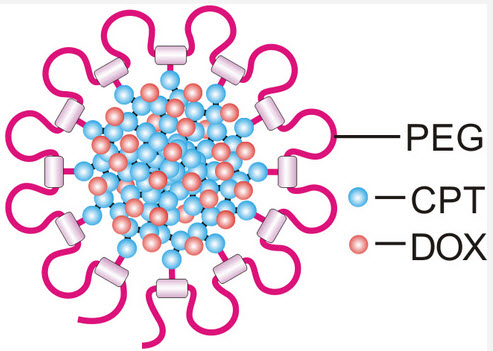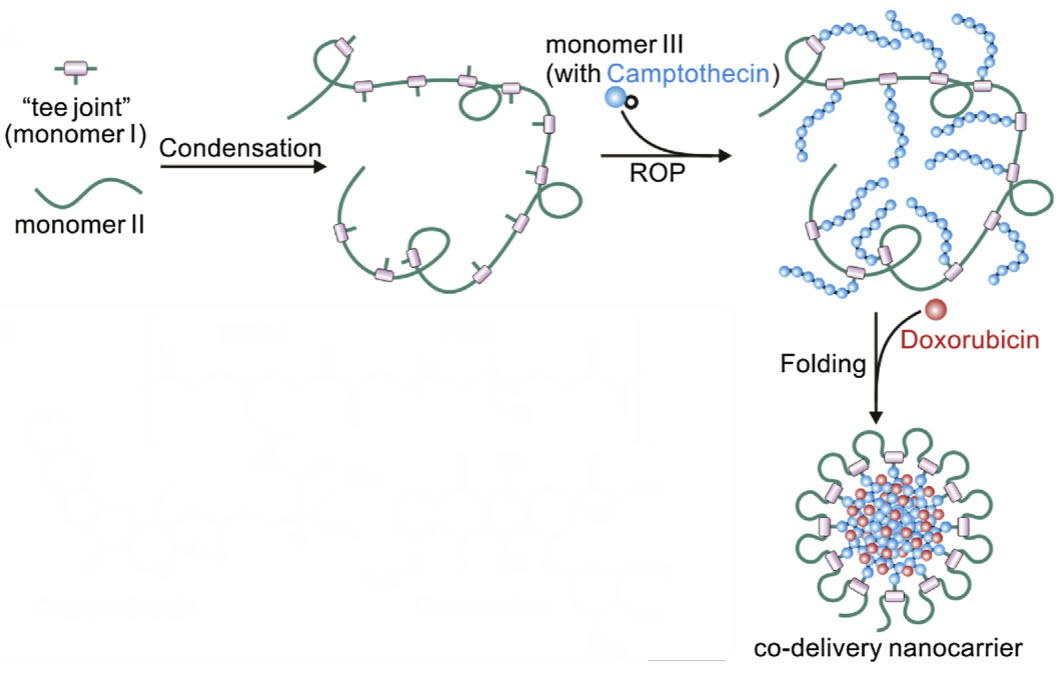‘Nanodaisies’ deliver more powerful drug cocktail to cancer cells
May 30, 2014

Early tests of the “nanodaisy” drug delivery technique show promise against a number of cancers (credit: Ran Mo)
Nanoscale flower-like structures that can introduce a “cocktail” of multiple drugs into cancer cells have been developed by biomedical engineering researchers at North Carolina State University and the University of North Carolina at Chapel Hill.
“We found that this technique was much better than conventional drug-delivery techniques at inhibiting the growth of lung cancer tumors in mice,” says Dr. Zhen Gu, senior author of the paper and an assistant professor in the joint biomedical engineering program.
“And based on in vitro (lab) tests in nine different cell lines, the technique is also promising for use against leukemia, breast, prostate, liver, ovarian and brain cancers.”
How to make nanodaisies
To make the “nanodaisies,” the researchers begin with a solution that contains a polymer called polyethylene glycol (PEG). The PEG forms long strands that have much shorter strands branching off to either side. Researchers directly link the anti-cancer drug camptothecin (CPT) onto the shorter strands and introduce the anti-cancer drug doxorubicin (Dox) into the solution.
PEG is hydrophilic, meaning it likes water. CPT and Dox are hydrophobic, meaning they don’t like water. As a result, the CPT and Dox cluster together in the solution, wrapping the PEG around themselves. This results in a daisy-shaped drug cocktail, only 50 nanometers in diameter, which can be injected into a cancer patient.

Schematic design of graft copolymer synthesis and stealth nanocarrier folding. Graft copolymer with pendant drug segments is synthesized from three monomers by a two-step polymerization, and then folds into nanostructure with free doxorubicin encapsulated. The graft copolymer is comprised of a PEG-containing multiblock copolymer main chain and the polyglutamic acid-based side chains with “purely” conjugated camptothecin. (Credit: W. Tai, et al./Biomaterials)
When injected, the nanodaisies float through the bloodstream until they are absorbed by cancer cells (PEG also has chemical properties that prolong the life of the drugs in the bloodstream).
Once in a cancer cell, the drugs are released. “Both drugs attack the cell’s nucleus, but via different mechanisms,” says Dr. Wanyi Tai, lead author and a former postdoctoral researcher in Gu’s lab.
“Combined, the drugs are more effective than either drug is by itself,” Gu says. “We are very optimistic about this technique and are hoping to begin pre-clinical testing in the near future.”
The research was supported by the National Institutes of Health and funding from NC State and UNC-Chapel Hill.
Abstract of Biomaterials paper
A graft copolymer with pendant drug segments can fold into nanostructures in a protein folding-like manner. The graft copolymer is constructed by directly polymerizing γ-camptothecin-glutamate N-carboxyanhydride (Glu(CPT)-NCA) on multiple sites of poly(ethylene glycol) (PEG)-based main chain via the ring open polymerization (ROP). The “purely” conjugated anticancer agent camptothecin (CPT) is hydrophobic and serves as the principal driving force during the folding process. When exposed to water, the obtained copolymer, together with doxorubicin (Dox), another anticancer agent, can fold into monodispersed nanocarriers (with a diameter of around 50 nm) for dual-drug delivery. Equipped with a PEG shell, the nanocarriers displayed good stability and can be internalized by a variety of cancer cell lines via the lipid raft and clathrin-mediated endocytotic pathway without premature leakage, which showed a high synergetic activity of CPT and Dox toward various cancer cells. In vivo study validated that the nanocarriers exhibited strong accumulation in tumor sites and showed a prominent anticancer activity against the lung cancer xenograft mice model compared with free drugs.